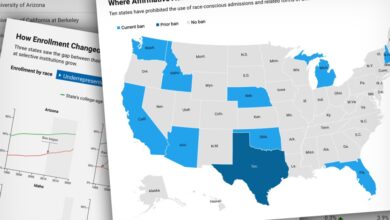Covid-19 Disrupted International Education, but Colleges Remain Hopeful About Global Engagement

The Covid-19 pandemic was a major disruptor of American colleges’ international-education efforts, yet college leaders surveyed by the American Council on Education remain optimistic about the future of higher education’s global engagement.
Sixty percent of colleges said that their level of institutional internationalization during the pandemic was low or very low, according to a new report, “Mapping Internationalization on U.S. Campuses,” released today. By contrast, 47 percent of institutions said their international activities had been accelerating in the years prior to the pandemic, 2016 to 2020.
Still, academic leaders took a positive view of future internationalization efforts, with two-thirds predicting that their institution’s overall level of international engagement would increase in the next five years.
Despite that hopeful outlook, the report, the fifth in a series of surveys the council has conducted since 2006, shows that the shift away from international education as a campus priority actually began before the pandemic. For instance, in 2016, 72 percent of colleges reported their internationalization efforts were accelerating, compared with only about half of institutions in the years immediately preceding the Covid outbreak.
The number of colleges that include international or global education in their mission statements or strategic plans has also declined over the years. In the 2012 report, 51 percent of respondents said internationalization was part of their institutional mission. By 2017, the share had fallen to 49 percent. In this latest survey, 43 percent answered in the affirmative.
Likewise, the share of colleges reporting that international education is among the top five priorities in their strategic plan has decreased over time: 52 percent in 2012, 47 percent in 2017, and just 36 percent in the most recent report.
The report’s authors don’t delve into the reasons for this shift, but as The Chronicle has previously reported, the factors may include a continuing budget squeeze following the 2009 recession, a growing reckoning with the negative social and economic consequences of globalization, and, critically, a political and policy environment during the Trump administration that put global mobility and international academic partnerships in the cross hairs.
There are also questions about whether colleges truly institutionalized their commitment to international engagement. Indeed, in the latest report, only 18 percent of respondents said they had a formal strategy for striking partnerships with universities around the globe. Just 28 percent said they had assessed the impact of their international engagement in the past three years.
Taken together, the findings paint a troubling picture of American colleges de-emphasizing international education at a time that global interconnectedness and collaboration is more crucial than ever — as underscored by the pandemic itself.
But at the same time, college leaders’ sense of confidence about the future of internationalization suggests a possible, more optimistic scenario, one in which the pandemic-enforced pause on many international activities could lead to stronger re-engagement. We may have to wait until the next survey to measure it definitively.
Meanwhile, here are some additional highlights from the newly released survey, which includes responses from 903 institutions:
College leaders’ experience with and views on global engagement differs by institutional type. Respondents at doctoral institutions, for example, were much more bullish about the future of international engagement, with 78 percent saying they expected their colleges’ level of internationalization to increase in the next five years. Among those at associate colleges, 56 percent had a similarly positive outlook.
Likewise, doctoral and baccalaureate institutions were much more likely to include international education in their mission statements than associate or special-focused colleges.
Colleges emphasize educational and diversity goals as key drivers for internationalization. Although tuition dollars from international students have become more critical to colleges’ bottom line, only a third of respondents said that “to generate revenue for the institution” was a primary reason for global engagement, making it a distant fourth choice.
The top two reasons were “improving student preparedness for a global era,” selected by 70 percent of respondents, and “diversifying students, faculty, and staff,” cited by 64 percent.
Colleges have increased the support they give international students, both in and out of the classroom. Three quarters of respondents reported having an orientation to their institution or to the American classroom for international students, up from 69 percent five years earlier. Two thirds of colleges said they provide individualized academic support services. And more than half said they offer mental-health services for international students, who were a particularly vulnerable group during the pandemic.
Institutions have increased professional-development opportunities for faculty members related to internationalization, such as workshops to help them integrate more international-learning outcomes into the curriculum and use technology to enhance the international dimensions of their courses.
For more coverage of this report, as well as news and analysis of what’s new in international education, check out Latitudes, The Chronicle’s global newsletter. You can subscribe here.
Source link






